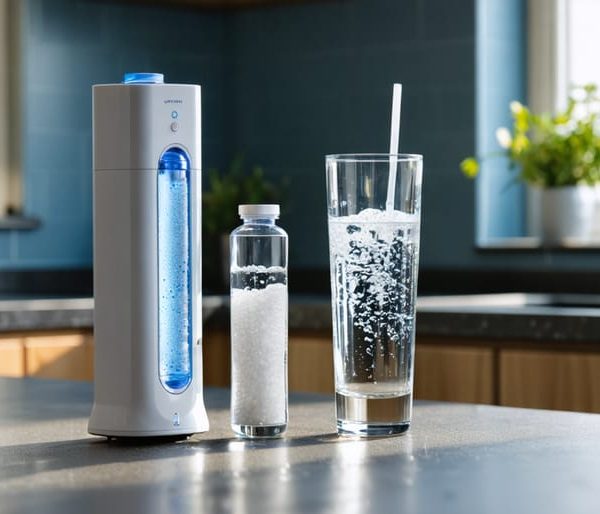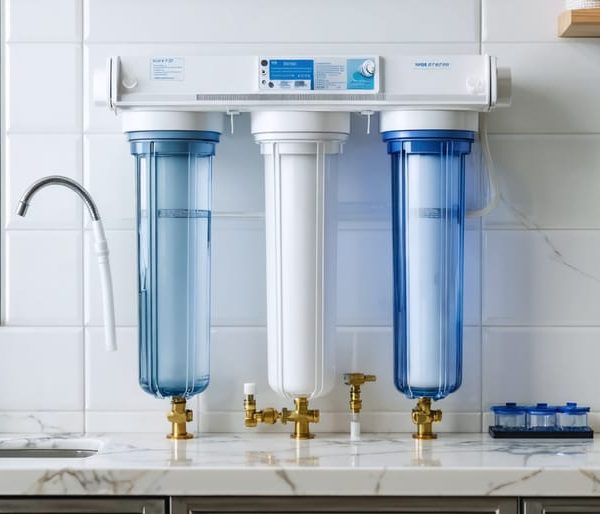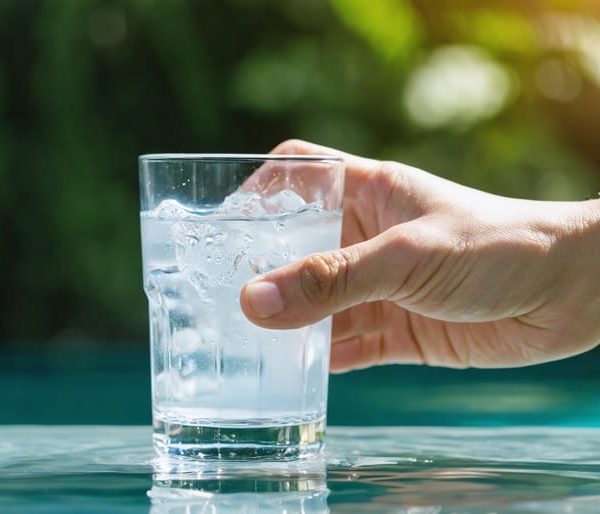Water filter pitchers work through the process of adsorption thanks to their carbon media. They attract and trap certain contaminants in your drinking water, effectively removing them as your water goes through its filter. Water filtration occurs in the top chamber of the pitcher, and the filtered water goes to the lower chamber, ready for use.
Water filter pitchers are a cost-effective way to filter water at home. This guide will talk about how water filter pitchers work, how to maintain them, and more. We start by understanding what a pitcher is.
What Are Water Filter Pitchers?
Water filter pitchers are water filters that provide a temporary and seamless solution to drinking water contamination in your home. They filter out harmful contaminants from your water.
Pitcher filters appeal to consumers because they are affordable, convenient, and low-maintenance.
A pitcher can cost as low as $20. What’s more interesting is that their price does not determine their quality. For instance, the most expensive water filter pitchers are not even the ones that offer the most value.
The best water filter pitcher can filter out most of the harmful contaminants in your tap water in the shortest time possible. Brita filters, Longlast filters, and filtered pitchers are good examples.
Water filter pitchers also improve tap water quality and enhance how your water smells and tastes by eliminating chemicals such as chlorine.
The best pitcher filters also eliminate contaminants such as heavy metals, PFAs, disinfection byproducts (chloramines), pesticides, herbicides, etc.
What Media Does a Water Filter Pitcher Use?
Most pitcher water filters use carbon filters, precisely the activated carbon filter. Carbon filters use a filtration process referred to as adsorption.
The media draws in contaminants and traps them, effectively taking them out of the water and going through the filter to the bottom chamber.
Carbon filters are among the most widely used water filters because of their efficiency in filtering contaminated water. The adsorption process they adopt is more potent when executed slowly.
Adsorption depends on gravity to filter drinking water, resulting in a very slow flow rate. This is good because it allows for more contact time between the media and your tap water. This means your pitcher filter can remove more contaminants.
These water filters are particularly efficient in the removal of specific contaminants. However, they’re not known for removing a wide range of contaminants. That’s the forte of the reverse osmosis system.
To compensate for the shortcomings of carbon media, many pitcher filter brands add other filtration media such as ion exchange resin and KDF media to the carbon media.
This makes your pitcher more effective in filtering drinking water and gives them a wider range of contaminants they can eliminate.
Common Contaminants Water Filter Pitchers Remove
The following contaminants are commonly found in city water. They include:
- Nitrates
- PFAs
- Fluoride
- Pharmaceuticals
- VOCs
- Chlorine (taste and odor)
- Heavy metals
- Cadmium 6
- Total dissolved solids
- Chlorine
- BPA
- Chloramines
- Chromium 6
- Semi-volatile compounds and so on.
How Water Filter Pitchers Filters Water
Some water filter pitcher brands adopt chemical filtration methods, while others use physical methods to purify water. However, the basic procedure of filtering water is very similar to water filter pitchers.
Filter pitchers consist of the handle, the spout, and two chambers. The upper chamber contains the filter media, which adsorbs or eliminates contaminants from your water.
Many filter pitcher users wonder about the potency of the filtration process because the filter pitcher is compact.
Well, first of all, these small filters in your filter pitchers work effectively because water filter pitchers are designed to filter a small quantity of water.
The filters used in water filter pitchers may last for up to 2 months before requiring filter replacements.
Most refrigerator or under-sink filters use the same filtration techniques as water filter pitchers. However, they last longer because their filter cartridge is larger.
The smaller the filter cartridge, the less durable they are. So the filter cartridge of your water filter pitcher should be replaced to ensure optimum performance.
The Step-by-Step Process
The functioning of water filter pitchers largely depends on the water filter pitcher brand. Most filter pitchers work commonly. Below are the following steps that apply to most water filter pitchers;
- Step 1: Firstly, add tap water from your faucet into the upper chamber of the water filter pitcher and place the lid on the pitcher.
- Step 2: Next, tap water passes through the pitcher’s media into the lower chamber. This filtering process can take as long as 20 minutes. The duration of the entire process depends on factors such as the water quality, filter pitcher size, and the age of the water pitcher filter.
- Step 3: The filtered pitcher draws contaminants out of your drinking water, and treated tap water enters the lower chamber.
Your water has been successfully filtered. Your water filter pitcher’s spout is designed only to bring out the filtered water from the lower chamber. This way, there’s no chance of the water going to the top chamber and getting contaminated again.
Do All Filter Pitchers Function the Same?
The short answer is no. There are subtle differences among water filter pitchers in terms of their ability to filter out impurities. This is due to the different filter media they use.
That’s why we advise buyers to compare filters and read genuine reviews. They should also check out professional proof, such as NSF certifications, to ensure they get one of the best water filter pitchers.
Many brands may use alluring words to convince potential buyers about the potency of their water filter pitchers. Ironically, there’s nothing unique about their filter pitchers. Their pitcher water filters often eliminate contaminants causing taste and smell in your water. Nothing extra!
Most filter pitchers are equipped with only the activated carbon media. This means these water filter pitchers remove contaminants such as chlorine and heavy metals such as mercury and lead. So an average water filter pitcher has a narrow range of contaminants removal.
When it comes to high-quality water filter pitchers, the story is different. This filter pitcher is equipped with multiple stages of filtration media. This enables it to eliminate more than 360 common contaminants in your water supply.
The filter pitcher may include a granular activated carbon media, a ceramic filter, ion exchange resin, etc. All of these are in a single filter cartridge. Such filter pitchers also have NSF certifications to verify their quality.
Apart from producing filtered water and improving water taste, their filter cartridges are much more durable than average filter pitchers.
High-quality pitchers have a capacity of 100 gallons which is significantly more than the 40 gallons offered by average water pitchers. This means such water pitchers will produce an optimum performance for a longer period.
In the case of water pH, you can go for an alkaline water pitcher if you’re having issues with water acidity in your location.
How to Maintain or Replace the Filter Cartridges of Water Pitchers
Replacing the filter cartridges of your pitchers when due is very important. It keeps your water pitcher in top shape.
Some factors influence the intervals between replacements of your filter cartridge. Such factors include:
- Filter life
- Filter type
- Water quality
- Water usage
Various pitchers have varying lifespans. Brita filters, for instance, have a capacity of 40 gallons. So you may need to replace it every two months or so. There are filters with a capacity of up to 150 gallons, lasting up to 5 months or before requiring filter replacements.
We recommend you follow the manufacturer’s instructions concerning replacing your filter cartridges. Also, watch for indications that reveal your filter is due for replacement. Such signs may include poor water taste or a reduced flow rate.
Follow the steps below to replace the filters of your water pitchers;
- Step 1: Take off the pitcher’s lid and detach the filter from the top chamber. Various water pitchers have different designs. So you may need to twist the filter, tip it out or simply click it to have it removed.
- Step 2: Remove the replacement filter from its wrapping or package. Ensure you use the same type of filter as the one you’re replacing so it will fit appropriately in the top chamber.
- Step 3: Refer to the user manual to flush the filter. Based on the filter, the requirements may be different. While some filters require soaking in water, others require rinsing for a few minutes.
- Step 4: Insert the new filter cartridge into the top chamber. According to the user manual, filter the required number of batches of water in your pitcher. This initial filtering is to eliminate carbon particles and prime the filter.
- Step 5: Replace the pitcher’s lid. What you decide to do with the old filter cartridge is up to you. You can either discard it or recycle it.
Cleaning the Filter of Your Pitcher
We recommend cleaning your pitcher weekly to restrict the growth of microbes such as bacteria and algae in the crevices and grooves of your pitchers.
Use mild soap, clean water, and an old but clean toothbrush. When cleaning your water pitcher, leave it dry and reassemble the components.
FAQs – Frequently Asked Questions
Q: Can a water filter pitcher eliminate bacteria from your water?
It can’t. Bacteria is outside the select range of contaminants that a pitcher can remove from your water. We recommend using a water filter with nano-sized microns to remove bacteria from your water. Reverse osmosis is a perfect example because of its reverse osmosis membrane. Gravity water filtration, which the pitcher adopts, cannot remove bacteria. Alternatively, if you want to kill bacteria in your water, go for a UV purifier.
Q: Is the water filter pitcher suitable for well water filtration?
No. The average water filter pitcher is ideal for most city water. Well water contains contaminants that your pitcher cannot remove. Such contaminants include tannins, bacteria, manganese, sulfur, iron, etc. There are a few exceptions, though. Top-notch pitchers can remove some well water contaminants.
Q: Can I use a pitcher for my dishwasher?
This depends on the pitcher brand. We advise you to check the user manual before putting your pitcher in your dishwashing machine.



